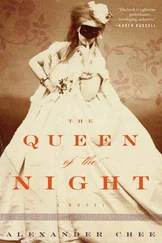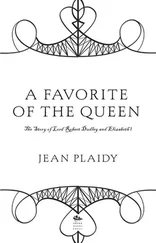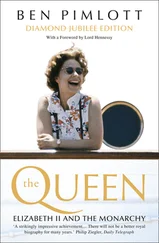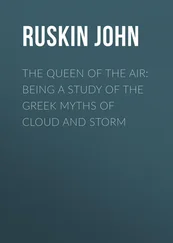Churchill observed that despite Queen Mary’s rigidity and apparent intolerance of change, “new ideas held no terrors for her.” Her paradoxical open-mindedness injected rigor into Lilibet’s education when Queen Elizabeth was inclined to relax her daughters’ routine, on the theory that they should have “a happy childhood which they can always look back on.” Through a back channel to Crawfie, Queen Mary suggested revisions to the curriculum and schedules, raised the caliber of the literature selections, and encouraged learning poetry by heart as “wonderful memory training.” She took Lilibet and Margaret on cultural excursions to museums and galleries, the British Mint, the Bank of England, Greenwich Palace, and the Tower of London.
Queen Mary’s passion was history—specifically the genealogical heritage of the royal family—and for Lilibet she was a living link to the past. Her grandfather, Prince Adolphus, the Duke of Cambridge, was one of the sons of King George III; Queen Victoria had been her godmother; and she knew two of Britain’s most noteworthy prime ministers, William Gladstone and Benjamin Disraeli. She could tell tales of the magnificent Delhi Durbar of 1911, when she and King George V were celebrated as Emperor and Empress of India, and she could describe the origins and particulars of the royal jewelry that she unabashedly flaunted, sometimes wearing the spectacular Cullinan I and II diamonds (530.2 and 317.4 carats respectively) as a brooch between her ample bosom.
In Lilibet’s pantheon of mentors and tutors, her father had a singular place. George VI alone could tell her what it was like to be monarch, what the challenges were, and how best to meet them. She was brighter than her father, who labored to commit facts and figures to memory, and more even-tempered, but she shared his shyness and his sense of dedication. She watched with admiration his struggle to overcome his stammer for his annual Christmas broadcast, and she noted his diligence in jotting down ideas on a pad he kept nearby during meals. His “steadfastness,” she later said, had been her model.
SHE LEARNED TIMELESS lessons about perseverance, courage, and duty from her father’s conduct during World War II. Lilibet was only thirteen when Britain declared war on Germany on September 3, 1939, after Hitler’s invasion of Poland. Six weeks later, she was in Scotland with Margaret Rose and Crawfie, reading “At a Solemn Musick” by Milton as word came over the radio that the Nazis had sunk the battleship Royal Oak , one of the first major blows to Britain’s morale. The King opened a spacious house on his Balmoral estate in the Scottish Highlands to children and their mothers who had been evacuated from the port city of Glasgow ahead of Nazi bombing. Crawfie directed the princesses to serve them tea, and to talk to the women about their sons and husbands serving in the armed forces.
On May 10, 1940, German troops surged into Holland, Belgium, Luxembourg, and France, and Neville Chamberlain resigned as Britain’s prime minister, to be succeeded by Winston Churchill. Lilibet wept while listening to Chamberlain’s resignation speech on the radio; it was clear that after nearly nine months of tense anticipation, the real war was beginning. Two days later, the princesses were sent to the safety of the medieval fortress of Windsor Castle twenty-one miles from the center of London, where they would live within its thirteen acres surrounded by thick walls until the defeat of Germany in May 1945. For security reasons, their location was kept secret, although they were able to venture beyond the castle.
Throughout the war the King and Queen spent their days either at Buckingham Palace or traveling around the country on the ten-car Royal Train, visiting troops, factories, hospitals, and bombed-out neighborhoods. Many nights they would join their daughters at Windsor and sleep in a cavernous shelter built under the castle’s Brunswick Tower or in a fortified ground-floor apartment in the Victoria Tower. Their resolve to continue working in London exposed them to considerable danger and endeared them to the British populace. After Germany launched its Luftwaffe bombing campaign against British cities and military targets in the summer of 1940, Buckingham Palace was hit nine times. The second bomb, which fell in mid-September, destroyed the Palace chapel and nearly killed both the King and Queen.
Like the rest of her generation, Elizabeth was thrown by the war into an extraordinary situation that deeply affected her adolescence. But contrary to what some observers have said, she wasn’t consigned to “purdah” or kept in a state of suspended animation. If anything, her life in the castle gave her an early introduction to the male world she would inhabit as Queen, since she mixed frequently with the young officers in the Grenadier Guards assigned to protect the royal family. (The Grenadiers, founded in 1656, are one of the seven prestigious regiments of the Household Division under the aegis of the monarch. The four other regiments of foot guards are the Coldstream, Scots, Irish, and Welsh, along with two Household Cavalry regiments, the Life Guards and what became known as the Blues and Royals after the merger of the Royal Horse Guards and the Royal Dragoons.) “I was brought up amongst men,” her sister, Margaret, would later say.
At age sixteen, Elizabeth was named an honorary colonel of the Grenadiers and applied her gimlet eye to the first of many regimental inspections. Her rigorous critique prompted one of the majors to advise Crawfie to tactfully remind the princess that “the first requisite of a really good officer is to be able to temper justice with mercy.”
The officers came to tea as well as more formal luncheons where Elizabeth arranged the seating and developed her skills as a hostess. The group included Lord Rupert Nevill and Hugh Euston (later the Duke of Grafton), who would become lifelong friends. Other guests included officers who were convalescing or on leave, among them airmen from New Zealand, Australia, Canada, and the United States. From having been “a rather shy little girl,” Elizabeth “became a very charming young person able to cope with any situation without awkwardness,” Crawfie observed. “She was an excellent conversationalist.”
Elizabeth and her sister “never forgot there was a war on,” said Antoinette de Bellaigue, “but there was no feeling of doom and gloom.” Windsor’s windows were blacked out, the castle was reinforced with barbed wire and protected by batteries of antiaircraft guns, the vast rooms were illuminated by bare low-wattage bulbs, and hot water was so limited that lines were drawn at five inches in all bathtubs—although the family ate well, with supplies of meat and game from various royal estates. The princesses became accustomed to what their mother described as “the whistle & scream of bombs,” yet she fretted that they were “looking different” because “the noise of guns is so heavy” and so much ordnance landed in the vicinity—nearly three hundred high-explosive bombs by the war’s end. “Though they are so good & composed,” she wrote to Queen Mary, “there is always the listening, & occasionally a leap behind the door, and it does become a strain.”
Several times the family escaped for brief holidays at Balmoral, where Queen Elizabeth was delighted to see her daughters revive with “pink cheeks and good appetites” after walks in the crisp air on the heather-covered hills rising above Royal Deeside, the valley along the River Dee that had been the sentimental heart of the family since the time of Queen Victoria and Prince Albert. The heiress presumptive’s great-great-grandparents had bought the Balmoral estate in 1852 after falling in love with the Scottish Highlands. “All seemed to breathe freedom and peace,” Victoria wrote in her journal, “and to make one forget the world and its sad turmoils.”
Читать дальше












